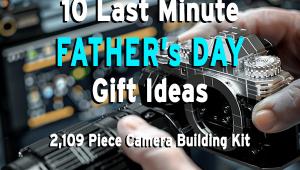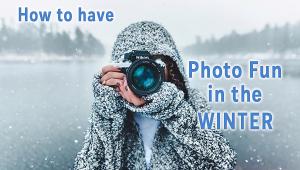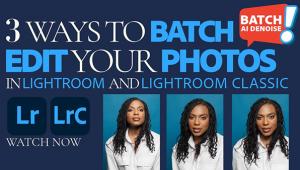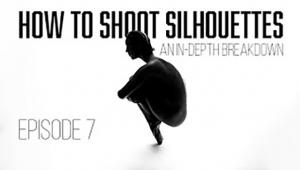Binoculars Buying Guide for Photographers
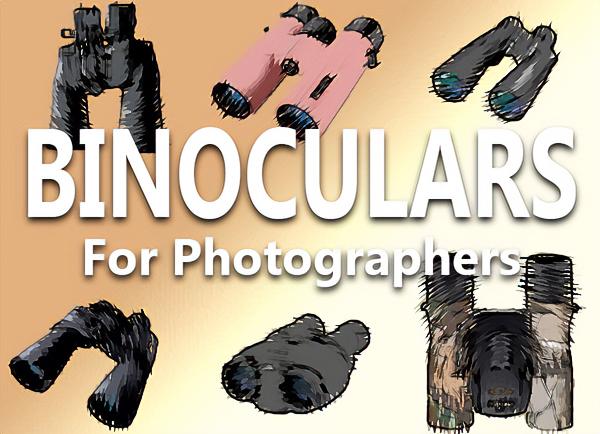
Binoculars have only one purpose: they make distant objects appear closer. They all look pretty much alike, too. But don’t be fooled into thinking that they’re all the same. Here’s a straightforward, plain-talk guide to buying the binoculars best for you.
What do the Numbers Mean?
What is a 7x35 and how does it compare to an 8x40?
At their core, binocs are just conjoined lenses optimized to maintain depth perception when used for direct viewing by large primates, usually humans. To make our buying experiences more adventurous, binocular manufacturers insist on using seemingly obscure nomenclature that’s very different from the words we encounter when talking camera optics.
Binoculars are classified by their Power and Objective Diameter, two specifications that always appear together with an “x” between them. For example, 7x35 are seven power glasses with a 35mm objective diameter. It’s pronounced “7 by 35.”

The first number is the Power number. It indicates how many times closer the subject appears. Think of it as the magnification factor. Seven power makes things appear seven times closer. Eight power, eight times closer. It’s that simple.
The number after the “x” is the Objective Diameter. It partially determines the amount of light that can physically pass through the optics. A pair of 7x50 binoculars is brighter than a pair of 7x35 because more light can pass through, all else being equal. When comparing glasses of different powers, divide the power number into the objective diameter to calculate relative brightness. For example, the theoretical brightness of 7x35 and 10x50 binoculars is the same: 35 divided by 7 equals 5, the same factor we get if we divide 10 into 50. Remember, these are mathematical comparisons. Because of differences in lens coating, prism material and other factors, actual performance may vary (and usually does).
Then gimme them 10-powers, right? No. Higher power glasses are not always better. Binoculars in the 10X range and higher can be very difficult to handhold. Imagine looking through a microscope during an earthquake. If the image jumps around, that leads to eyestrain and headaches, and means you’ll probably leave the glasses at home. Stay on the low side in the 7x or even 6x power range but get a pair with the largest objective diameter you can find. The larger objective diameter will deliver a brighter image.
A versatile all-around choice for normal field use is a 7x50 glass—but these can be large and on the heavy side for some purposes. Use this configuration as a baseline and prepare to compromise after reviewing the other specifications that we delineate below.
 Other Numbers
Other Numbers
Next number to know is the Field of View, the indication of how wide your view is when looking at a scene 1,000 yards distant. High numbers indicate that the binoculars are Wide Angle. At a given power you’ll be able to see more edge-to-edge without panning, and that’s beneficial at football games and auto races, or when following wild life that moves into and out of your field of view. This is notably helpful when using the binoculars attached to a tripod or car window clamp, when moving the glasses is impractical.
Next comes Eye Relief. As with camera viewfinders, Eye Relief refers to the distance the binoculars may be positioned away from the eye and still be used comfortably. If you wear eyeglasses, look for eye relief numbers in the 18mm to 21mm range.
Close Focus is the last number on our list. Self-explanatory, it indicates how close you can be to a subject and still focus clearly. Don’t overlook this spec, particularly if you plan to use the glasses in your yard, at your kids’ sporting events and for general spontaneous wildlife viewing.
Applications – What Are You Looking At?
With a clear understanding of the meaning of the numbers, the most important consideration is Application. What do you plan to look at, and under what conditions? Glasses appropriate for watching the deer at the Nature Center are wildly different from those you’d use at a Broadway play.
Depending on your other interests and hobbies, you may be interested in checking out binoculars with special attributes like image stabilization, an internal ranging compass, extra-wide wide-angle field-of-view and so forth. The good news is that most photographers need only a basic pair of binoculars, and making a smart purchase decision is easier for a photographer than for a boat captain or birder.
Sometimes expert advice can be misleading. When the Audubon Society examined 50 pairs of binoculars in 2019 for The Audubon Guide to Binoculars they reviewed 8x42 “or similarly sized optics” because of the popularity of that style among birders. They explained, “Most birders prefer 7- or 8-power binoculars because they’re bright and have a wide field of view, making it easier to find birds and to follow them in flight.”
That’s solid logic, and I blush to dispute such an auspicious and truly wonderful organization. But there’s no hard and fast rule. One could make a case that 7x50s are equally suited to the task of serious birding, and are brighter too. Birders of the world, feel free to comment and tell me how wrong I am.
Features, Features and More Features
Although all of these basic black sets of tubes may look more-or-less alike, the differences are surprising. Let’s dig in.
 Porro Prism vs. Roof Prism
Porro Prism vs. Roof Prism
When we think of military binoculars, the classic porro prism design comes to mind. The eyepiece sections are smaller than the main optical tubes, and the overall shape is anything but smooth or sleek. Roof prism designs, on the other hand, look like two short pieces of pipe laid side-by-side. Some taper slightly from eyepiece to exit pupil but many are straight as a soybean row in Illinois.
There are advantages and disadvantages associated with both designs, but for our summarized purposes today the essential difference is size. The roof prism design allows construction of glasses that are smaller overall and therefore easier to fold, stow and carry.
Individual Diopter Adjustment
If you cannot adjust the eyepieces to accommodate the difference in vision between your left and right eye, don’t give the glasses a second look (pun intended). Otherwise I can guarantee misery for the life of the product.
Also look for Diopter Adjustment with click-stops. Basic diopter correction allows you to adjust the binocs to match your eyesight; having click-stops allows you to reset quickly when your spouse borrows the binoculars and changes the setting. Clicks (detents) also make it harder to move the dial accidentally.
Don’t be alarmed if only one tube has diopter adjustment – that’s normal. Focus using only the unadjustable side, then make your corrections on the other side.
Comfort and Eyestrain
Unfortunately, comfort is something you can’t easily evaluate without using the glasses for an extended period of time. As a general rule (admittedly with exceptions) better quality, higher priced binoculars cause less discomfort and eyestrain than cheap, low-end glasses.
Using binoculars for a couple-three hours—all day at the ballpark, for instance, or watching a play—can make your brain hurt. Eyestrain caused by focus drift, unsteady support and phase shift can be agonizing. High quality roof prism binocs generally feature Phase Correction (porro prism glasses don’t need it). When an optical beam is split by a prism or other means, the two light paths can become out-of-phase. Better quality binoculars use special lens coatings or other methods to correct this phenomenon. Phase Correction delivers a crisp, contrasty image that’s easier on the old eyeballs.

Unsteady handling—even slight jiggling—contributes to eye fatigue in a major way. Sure, anyone can hold a pair of binocs steady, but can anyone hold them steady for 15 minutes straight? I can’t. For the ultimate in comfort, look into Canon IS models. Canon has been a leader in Image Stabilization not only for camera lenses, but in the binocular category too. Canon 10x30 Image Stabilization II binoculars can be ordered from Amazon for $549.
Size and Weight
This is another factor that influences comfort, including when you’re just carrying them. Binoculars come in dozens and dozens of sizes that weigh between a few ounces to over 12 pounds.
Often the size and weight are dictated by the desired performance expectations. Small pocket binoculars tuck easily into the outside pouch of a gadget bag or backpack but are not as bright as a full-size pair, and usually not as powerful.
So while you’re reviewing the list of available features, continue to ask yourself: Do I really want to carry these around all day? Will they fit in my camera bag? Will something smaller and lighter deliver the same experience?

Cosmetics
It should come as no surprise that some of the best binoculars in the world are made by camera and lens manufactures that we know and love. Leica, Canon, Zeiss, Nikon, Pentax, Olympus and other famous names all offer extremely high quality binocs. And like the cameras and lenses they produce, their binoculars are genuinely gorgeous.
That said, you can also buy glasses that are pastel pink, green or blue (like the Barska Crush series 10x42mm Shockproof glasses which run $69 from Amazon) or camouflage like the Nikon 6493 Aculon A30 10x25 (order from Amazon for $98) or high visibility yellow, military olive drab, basic black and other colors.

Be very careful if you choose camo, though. I once had a pair of camouflage binoculars. The pattern was so realistic—I set them down in the woods and never saw them again…
Zoom Style: Pros and Cons
Zoom glasses offer variable magnification (Power) and sound attractive, but they’re often larger, heavier and dimmer. For some applications, however, they’re hard to beat. They’re fun at baseball games, for example, where you can zoom in on an outfielder or zoom back to take in the whole infield.

One pair of zooms that I can recommend are the Nikon Aculon A211 10-22x50 binoculars. Available from Amazon for $159, they offer Nikon quality, BaK4 prisms (more about that later) and well-deserved pride of ownership.
Focusing Method
Most binoculars use a Center Focus system, whereby both optical tubes are adjusted by one knurled ring located between them. If you think you’ll have frequent need to use the glasses with only one hand, look for the “rocker style” focus mechanism that can be operated with one finger.
Individual Focus binoculars (i.e., each optical tube focuses independently) are such a pain in the glass to use that you’ll end up trading them for a hot dog and beer at the ballpark. Or maybe for just an extra pack of catchup.
Autofocus Often Ain’t
Be very, very wary of binoculars that are labeled “Autofocus.” To you and me, AF means that the lenses adjust to bring objects into sharp focus. Unfortunately, to certain binocular makers AF means “fixed focus” or “non-focusing.” Such glasses are preset to an average distance (about 25 feet usually) and—now get this—they rely on your eyes to bring subjects into focus. Imagine the impact that has on a headache.
Weather Resistance & Armored Exterior
Many popular glasses have rubberized surfaces, primarily to improve grip. Some are highly shock-resistant and many are waterproof or water-resistant. But the presence of a rubber coating does not automatically ipso facto ensure durability—or anything else. If your new binoculars will be subjected to wet and/or rough situations, e.g., boating or police surveillance, confirm that they’re shockproof and waterproof.
There are levels (degrees) of moisture and dust resistance, and the levels have been scientifically defined. If you want to learn more about the IP (Ingress Protection) certification (international standard IEC 60529) read this very short article Is Your Weather Resistant, Splashproof, Waterproof Camera Impervious to Water & Dust? we wrote a few years back.
Fog Resistant / Nitrogen Purged
If you see a pair of glasses marked Nitrogen Purged, that means the individual optical tubes have been flooded with nitrogen gas and sealed, locking out water vapor that could condense on the inside glass surfaces and render the binocs temporarily opaque. The added benefit is that sealing the nitrogen in seals the dust out. Binoculars with this feature are usually designated Fog Proof.
BaK4 Prisms
The presence of BaK4 glass prism material is one of the hallmarks of truly high quality optics. This is a more expensive glass but it provides sharper images with less eye fatigue. Close runner up is SK15, followed by BK7. At all costs, avoid binoculars that have prisms made from recycled 7up bottle glass.
Are Monoculars a Viable Alternative?
Nope. Next question.
Seriously, with their twin tubes, binoculars leverage our native depth perception, thereby allowing us to perceive three-dimensionality separating objects within our view. Monoculars have the advantage of being smaller and making you look like a salty pirate with a spyglass, but they’re not a suitable substitute for a good set of binoculars.

Theater Binoculars
Sometimes called “Opera Glasses,” these diminutive and often ornate binocs typically are 2X or 3X to avoid shake-induced eye fatigue. For example, the Aomekie Binoculars 3x25 Lorgnette are low power but bright, and easy to handhold thanks to the built-in wand-type handle. You can buy these from Amazon for $27.99 with this poorly punctuated warning from the seller: “Since this product is not a professional optical lens. It is more ornamental compared with the practicality.”
Marketing BS (as in Bulls**t)
Let’s face it—when you’re in the business of marketing a product that looks very, very much like all of your competitors’ products, you have to find ways to differentiate your wares. I get that. Sometimes preshrunk interspecular hydrofusion oculars, or some other imaginary attribute, is the only thing separating your product from the next $39 pair of imported crap that’s blister-packed and hanging near the checkout counter at the Outdoors Store.
There is a place in the market for inexpensive binoculars that use low-end components to keep cost down, but don’t let colorful marketing language deceive you. Product descriptions can include phrases like “stargazing,” “night eyes,” “low light vision” and so forth but that doesn’t necessarily mean that the glasses have any special powers. Investigate impressive claims by checking the verifiable specifications.

A Couple Recommendations
A pair of high quality 7x50 binoculars are ideal for most photographers and most situations. This style is bright, powerful and very versatile. The Nikon Action 7x50 Extreme ATB (All-Terrain Binoculars) is a solid choice. They offer most of the features and benefits itemized in the paragraphs above, including BaK4 prisms, long eye relief, click-stop diopter adjustments, grippy rubber coating and real waterproof seals. And they are nitrogen purged and therefore fogproof. They’re great looking, too. They weigh a shade over two pounds (35.3 ounces) but possess most of the high-end features anyone could ask for in a pair of premium field glasses and are very reasonably priced. Nikon Action 7x50 EX ATB binoculars cost $159 and can be ordered from Amazon.

If you are looking for the ultimate in quality but want a smaller glass that you can easily slip into a jacket pocket, sling pack or handbag, take a close look at the newly-refreshed Nikon Monarch M7 series. The smallest model, the Nikon Monarch M7 8x30, weighs 16.4 ounces and measures 4.7 x 4.9 inches. These roof prism glasses feature the premium components you expect from Nikon and are treated with an oil and water repellent coating. They are phase corrected and contain ED glass, dielectric high-reflective multilayer prism coating and multilayer lens coatings. (A well-designed dielectric coating can provide a reflectivity of more than 99% across the visible light spectrum.) Available at your local camera store, these Nikons are part of a full family of high quality Monarch M7 and Monarch M5-series binoculars that offer options to meet every need.
Footnote
The graphic at the top of this story was created using Boris FX Optics which we reviewed in January of 2021 . You can download a free, full-featured trial version by clicking this link.
—Jon Sienkiewicz
(As an Amazon Associate, Shutterbug earns from qualifying purchases linked in this story.)
